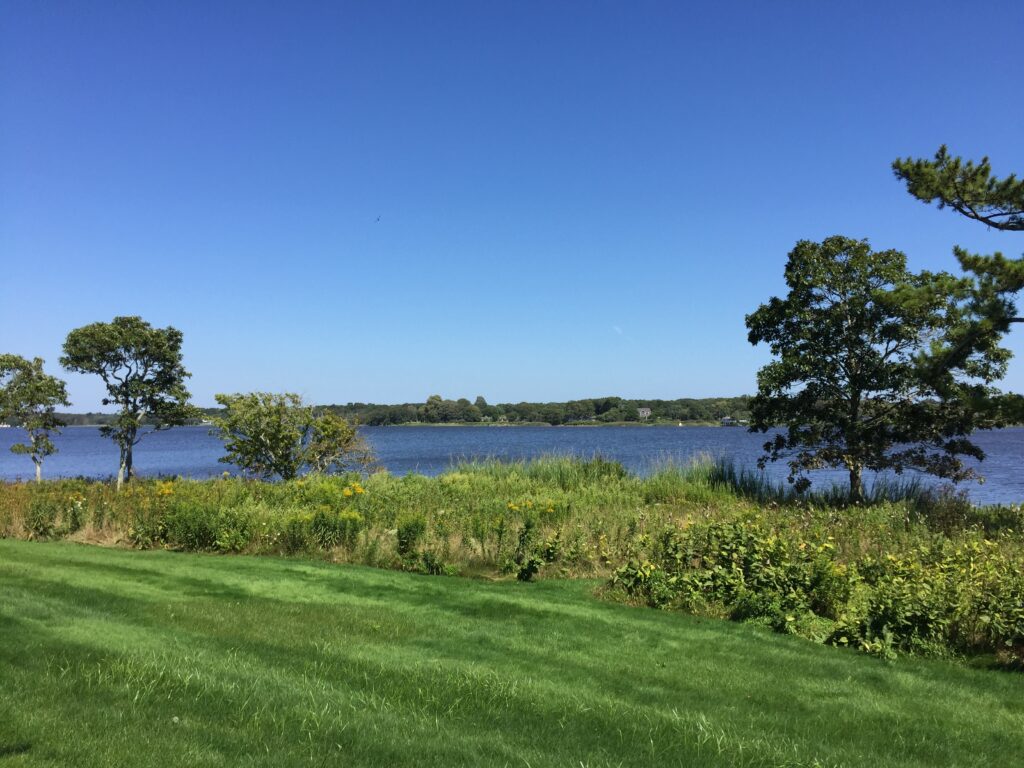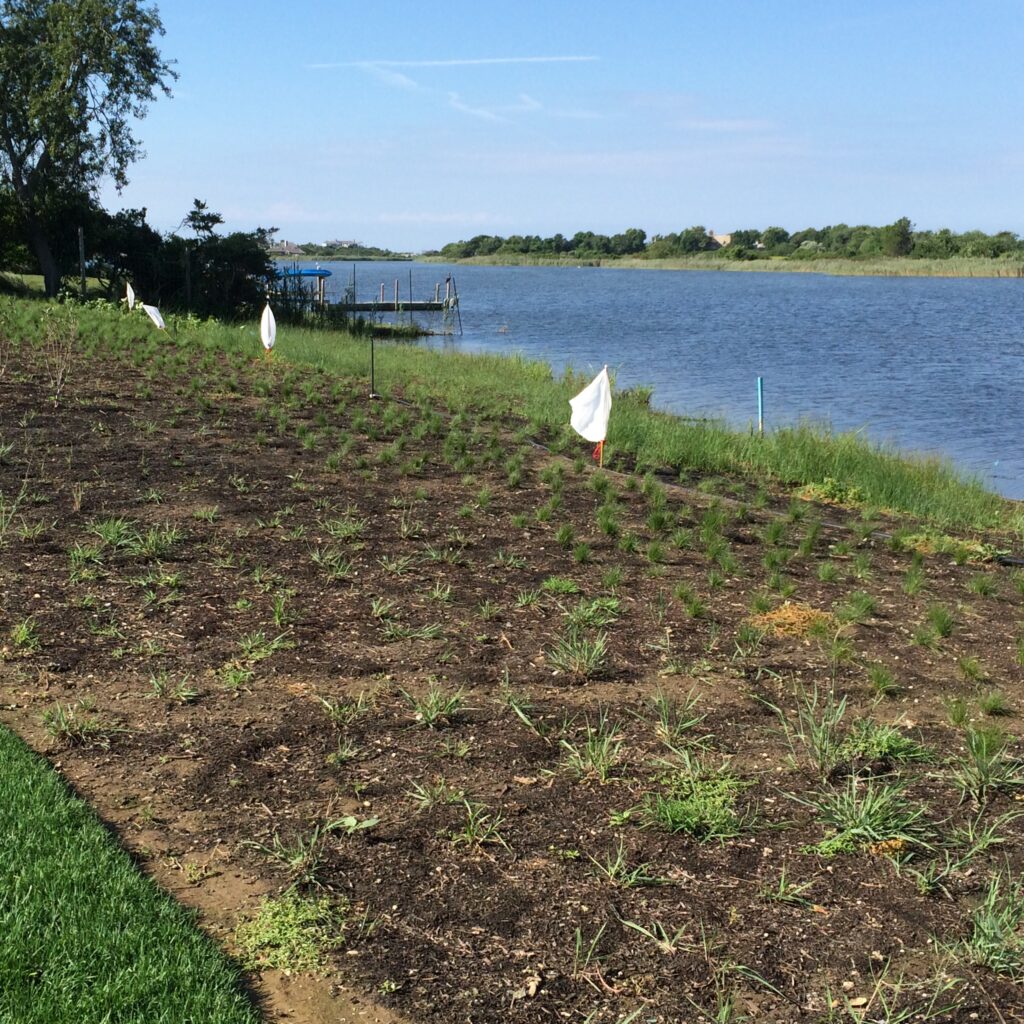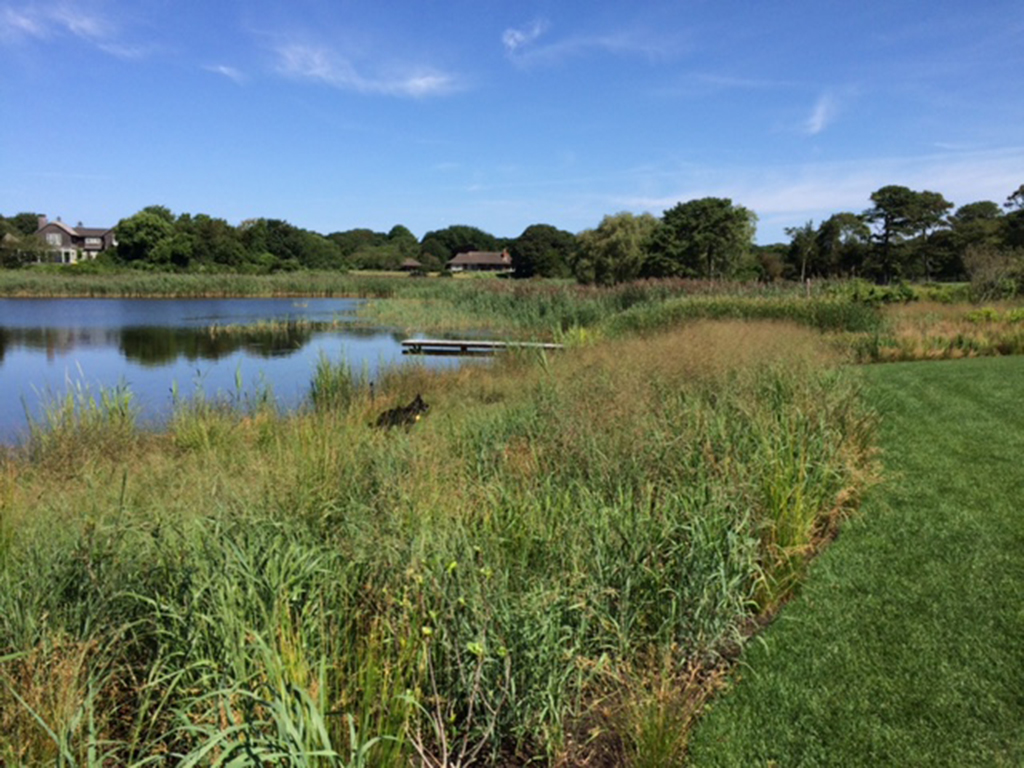Vegetation buffers and why they’re important
There are many compelling reasons to have a native plant buffer along the edge of Georgica Pond and other local waterbodies. In pre-colonial times, the shoreline of Georgica Pond was most likely a brackish marsh surrounded by forest. Although we can’t bring back that scenario, there are many things homeowners can do to restore the shoreline and cultivate a buffer.
Some common objections to buffers include loss of view, loss of access to the pond, and unkempt look.
In most cases, these objections can be managed and the overwhelming positive reasons for a buffer are identified here:
- Vegetation intercepts stormwater runoff and prevents nutrients such as nitrogen and phosphorous, pathogens such as bacteria and viruses from draining into the pond. Nitrogen is the key factor in triggering harmful algal blooms and sediment carries phosphorous, another nutrient of concern. Studies by the Gobler Lab showed nitrogen from fertilizer was found in runoff whereas nitrogen from wastewater was found in groundwater. You can reduce the amount of nutrients in the runoff on your property by using less and only organic slow-release fertilizer on adjacent lawn and landscaping.
- Erosion. Slowing the flow of surface water greatly reduces shoreline erosion. Less sediment increases the clarity of the water.
- Geese & Swans. These large waterfowl love lawns and their messy droppings can be quite a nuisance. A wide vegetated buffer of robust grasses and native wildflowers will act as a deterrent to geese coming ashore and at the same time attract pollinators such as dragonflies that eat mosquitoes.
- Legally required. For new development, local codes require that a setback from the wetland or pond edge be left undisturbed or restored. In the Village of East Hampton, the setback is a 150 feet and in the Town of East Hampton it is 50 feet. A review of scientific literature on buffers suggests that to be effective buffers should be at least 15 meters (49 feet) in most conditions.

Establishing a buffer is not so simple and hiring a good native plant landscaper to design and install it is recommended. In some places, just stopping mowing to the shoreline can work, but often plants need to be added. Native plants are recommended because they don’t require fertilizer which is prohibited by New York State Law within 20 feet of a shoreline. In the initial stage of developing your buffer, temporary irrigation, removal of aggressive weedy plants and herbivore deterrents may all be helpful.


Grasses, sedges and rushes are the core of a buffer. Their fibrous roots and dense growth are extremely effective in trapping sediment-laden runoff. They are very attractive, especially when they wave in the breeze and in autumn turn beautiful colors. Moisture loving wildflowers can be interplanted closest to the shoreline including marshmallow, blue flag iris, cardinal flower, swamp milkweed and Joe Pye weed. Scattered shrubs and an occasional tree with a nice silhouette add to the diversity and structural interest of a buffer. The Town of East Hampton’s webpage (PDF) has a comprehensive list of native plants which are commercially available to consider.
A mowed path should be maintained through the buffer to provide access.
By slightly modifying your landscaping and using fewer pesticides and slow-release organic fertilizer you will be helping to restore the water quality of Georgica Pond.
